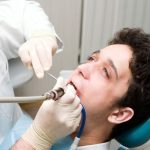Every day there are perhaps millions of people who visit dentists without any incident. Out of all these patients most will have no problems; however, there are also patients who will experience undue anxiety or stress. The reasons for these issues are many, perhaps going all the way back to an unfortunate experience in childhood. There is no reason for discomfort anymore as a modern dentist office in Roseville can turn to sedation dentistry, a way to make the patient comfortable and at ease while undergoing treatment.
There are different levels of sedation that the dentist can use; in all cases the patient remains conscious. Conscious sedation is very different from full sedation where the patient is made unconscious through the use of anesthesia. Conscious sedation has three categories depending on the level of apprehension of the patient.
• Light sedation: Most patients only require light sedation which uses oral medications or nitrous oxide, commonly known as laughing gas. These methods help to promote a relaxed feeling for the patient; the patient feels very calm but remains fully awake and aware of what is going on. While the patient is in the dental chair he or she may feel a slight impairment in cognitive skills, these patients will remember the appointment and the treatment shortly after they leave the dentist office in Roseville.
• Moderate sedation: If a patient is expressing considerable anxiety the attending dentist may turn to an IV to induce a deeper state of relaxation. There is a method which is referred to as the “one pill” treatment; this is a pill that slows the activity of the brain, it is often used for insomnia, it is taken an hour or so before the treatment starts. In addition to putting the patient into a very relaxed mode, the medication normally results in little or no memory of what happened. Moderate sedation is ideal for those patients who will be undergoing a considerable number of appointments due to their dental condition.
• Deep sedation: If it can be avoided the dentist would prefer not to use deep sedation. Patients are put into a partially unconscious state and they cannot understand or respond to instructions that the dentist needs to give during treatment, making it difficult for the dentist. In some cases, patients who are deeply sedated need help breathing as well.
Regardless of the degree of sedation, if you have had a bad experience at one time that makes going to the dentist traumatic, sedation dentistry is for you.






